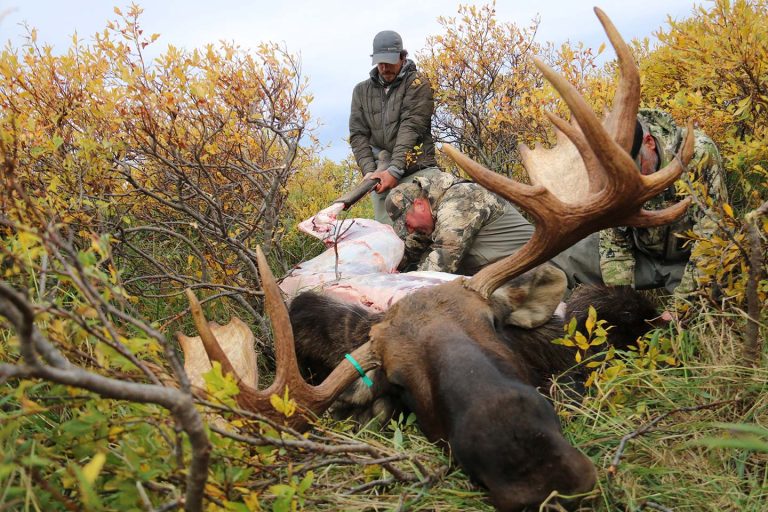On the second day of a 10-day moose hunt, I shot a nice bull. Eleven hours later my buddy and I had it broken down and were back in camp. It was my partner’s first moose hunt. Having lived in Alaska for nearly a decade, I’d been on a number of moose hunts, so I knew what to expect.
“I could care less if I kill a bull,” my buddy said that night as he crawled into his sleeping bag. The next day, we hung around camp and let our bodies recover. We glassed from a knoll. Moose moved through the river valley below all day long. There were some good bulls, and later that night my buddy came around, ready to try to fill his tag.
The next day we called in a bull, and he shot it. It was a big bull, and the packing job was far simpler than with my bull. When it comes to moose hunting in Alaska, there are no shortcuts and nothing is easy, ever.
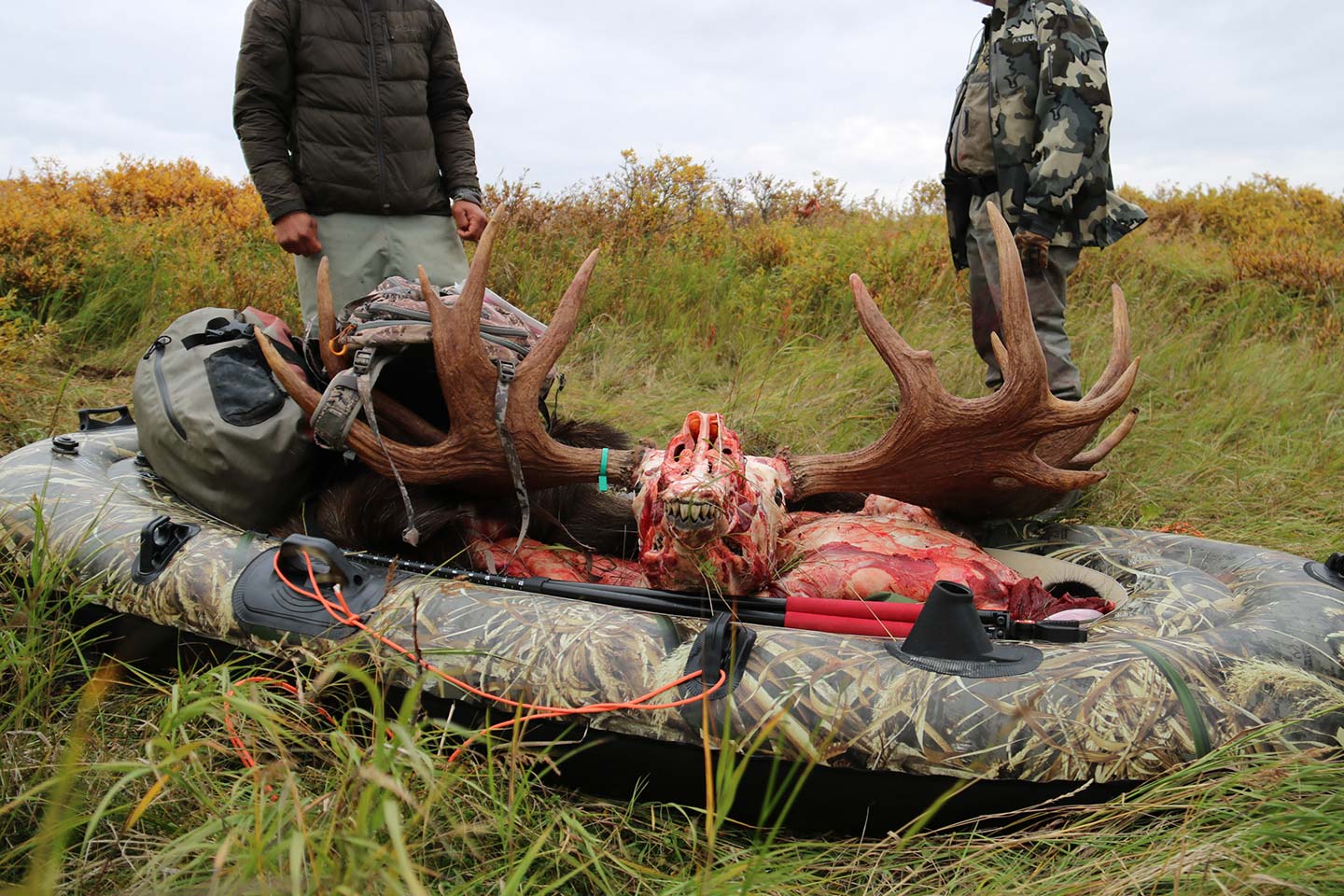
Be Honest
The best place to start your moose hunt is by being honest with yourself. Make sure your outdoor skills are at the level where you can survive in the wild under any situation. If bears, freezing weather, snow, mosquitos and being out of touch with civilization make you nervous, or if you don’t feel you can handle fixing motors, flat tires on ATVs or sealing holes in popped rafts (let alone navigating rivers and tundra on your own), then a guided moose hunt might be a better option.
Next, look into the mirror and ask yourself about the shape you’re really in. Moose hunting can be extremely tough, especially when you get a bull down. The country is not necessarily rugged, but wet tundra can be the hardest terrain there is to navigate. I’ve been fortunate to hunt all over the world and nothing exhausts or frustrates me more than hiking through soggy tundra. That’s especially the case when I have multiple loads of heavy moose meat on my back.
Hiking across the tundra, through bogs, over snow, and in rivers is the norm on a fall moose hunt in remote Alaska. One recent moose hunt I went on with a buddy found us carrying waders, knee boots and hiking boots in order to efficiently negotiate the variety of mountainous and boggy terrain we’d hunt above the Arctic Circle. We wore all three pairs of boots on that hunt.
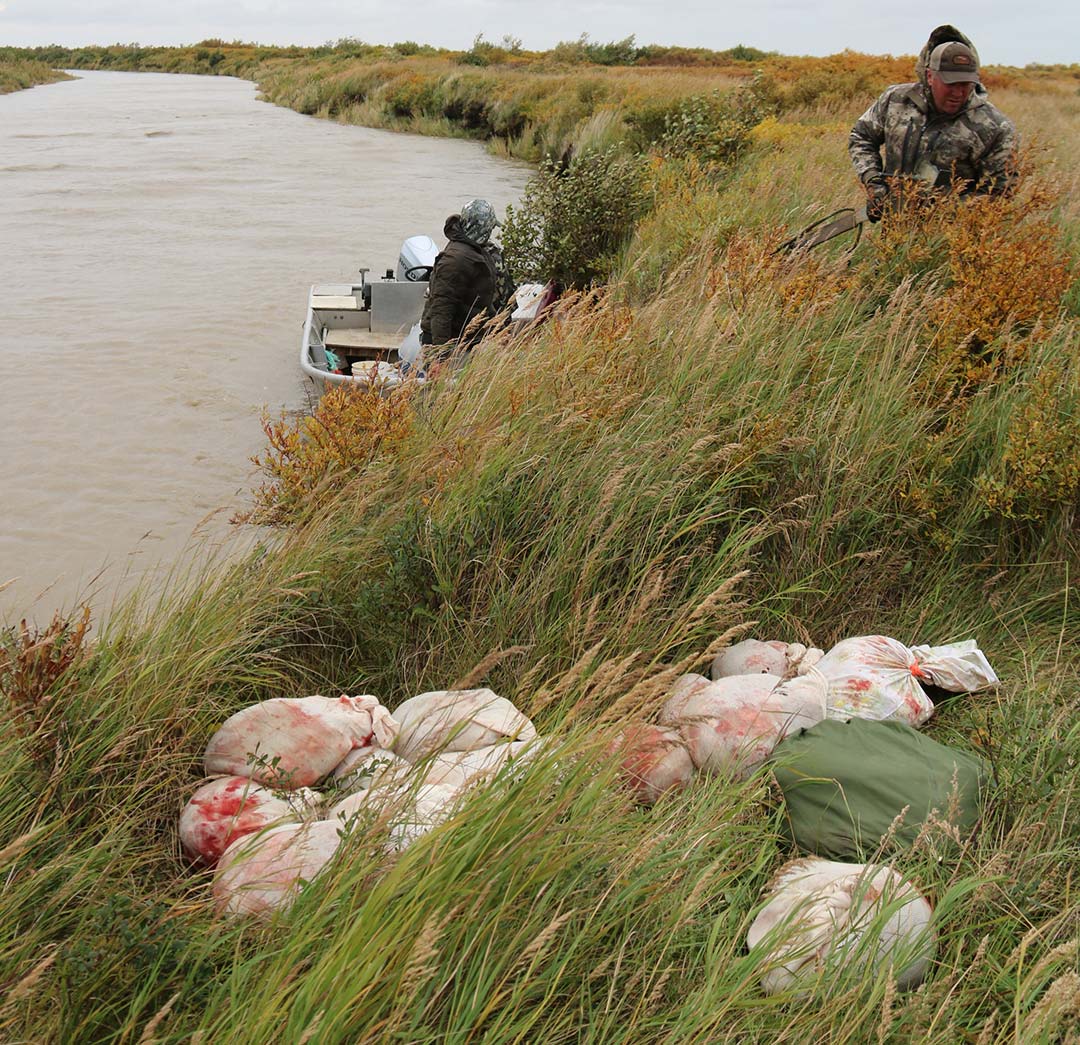
Check Locations
Once you know you can physically handle a moose hunt, decide on a place to go. Thoroughly research your options, making sure there are moose in the area you plan to hunt. Talk to regional biologists and air taxi services. Decide if you’re going on a river hunt or a mountain hunt, or maybe a combination of the two habitats.
If hunting moose on a river, you’ll likely get dropped off by an air charter in one spot and picked up seven to 10 days later downstream. You’ll navigate rivers in a raft, so be certain you’re comfortable doing so with all your gear and 800 pounds of moose meat (and twice that much if a buddy kills a bull). Sometimes you’ll stash meat near a gravel bar where the bushplane can pick it up when it arrives.
One of the biggest misconceptions about moose hunting a river is that bulls will be around every corner. They’re not. In fact, hunting rivers can limit your visibility because the surrounding brush is too dense and swampy to navigate. This means finding a bull in the river or on the bank is the only option. It’s doable, of course, but it takes time and sometimes a bit of luck.
On a mountain hunt, you’ll likely stay in one camp, hiking and glassing near there each day. If you get on to a big bull, you might spike camp out a day or two as you try to reach it. Make sure you can physically handle hiking in the terrain where you’ll be hunting. Also make sure that you can survive with minimal rations and that you can navigate in fog, snow and other conditions that may pop up. Once you commit, there’s no turning back.
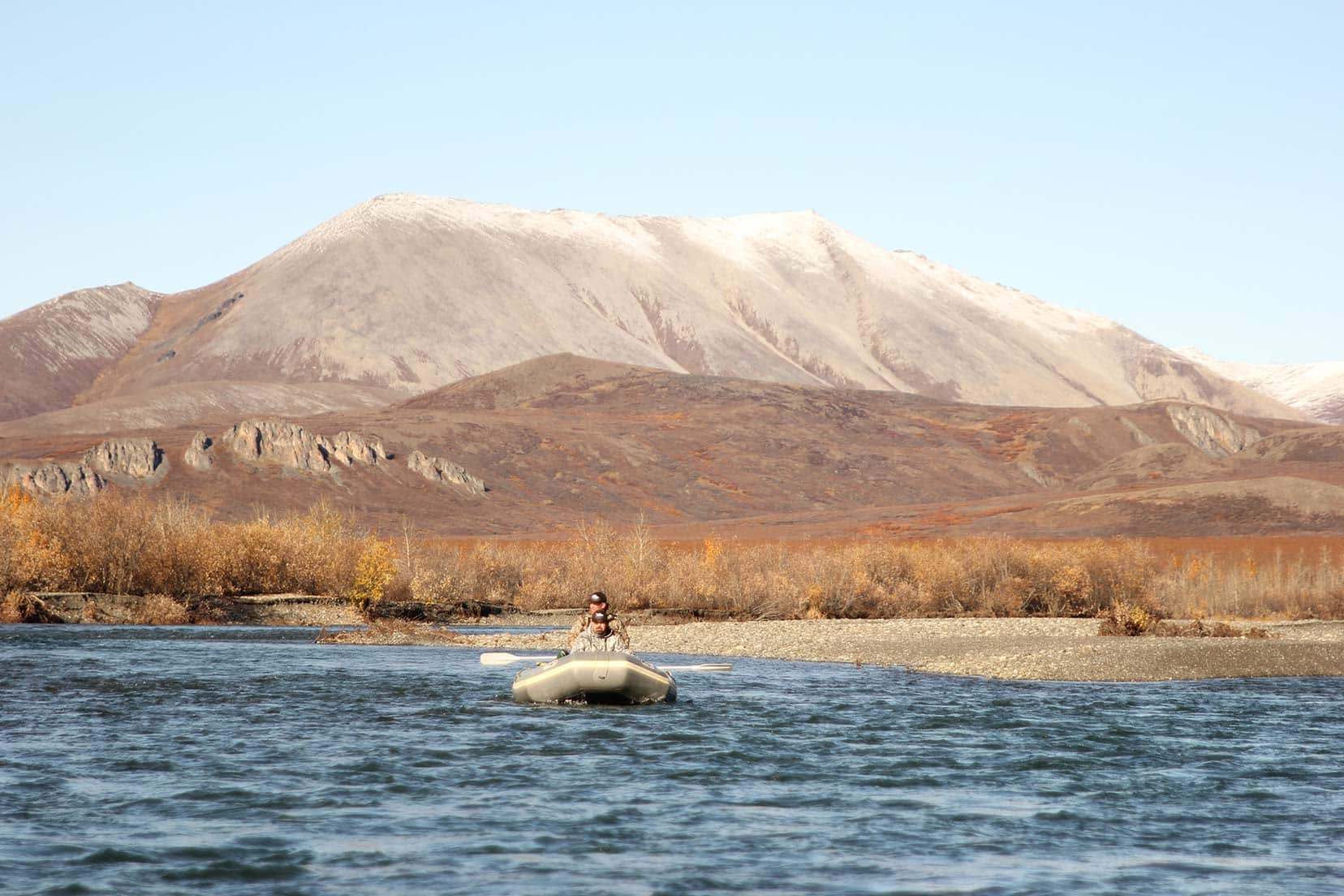
Pare Down Gear
I regularly see people taking too much gear when it comes to hunting moose in remote Alaska. When I’m packing at home, my rule is to lay out all I want to take, then cut that in half; that’s what I end up taking. On my last 10-day moose hunt, I wore the same outer clothes every day, and I wore some of those on my flight into Alaska on the commercial airline. I hunted in breathable waders every day, took a medium-weight rain jacket, and layered beneath that. A few pairs of socks and underwear, gloves and a stocking hat, and that was about it.
Many moose hunters rent their camping gear from a bush service. If you are doing so, tell them you want to go through it all before it’s loaded onto your plane. And I don’t mean just look at it all bundled up. Lay it all out and make sure the tent has all the stakes, that the raft fits the frame and that you have a pump, bilge pump and materials for mending holes. In addition to the wrong raft frame being given to hunters, I’ve heard of rafts with holes in them and tents that didn’t hold up to high winds. One group I know spent 10 days with no food because the air charter forgot it, and since it was 20 years ago, they had no communication. Luckily, they ate berries, caught fish and killed a black bear early in the hunt to survive.

Locating Device
A satellite phone or emergency locating device is one of the best pieces of gear you can take on a moose hunt. If there’s an emergency, you can make a call and get out. If there’s a storm coming, you may want to relocate. This happened to me and a friend on a moose hunt, but in our effort to relocate to avoid a massive storm that was coming in, our plane engine blew. Luckily, we made an emergency landing on a gravel bar that was below us, but our hunt was over. Sometimes a successful moose hunt means just making it home alive.
When packing, I put all my gear into a large dry bag. I then use three five-foot-long LoopRopes to lash it to a pack frame. Now I can check it on commercial airlines as one piece of luggage. I use the LoopRopes and pack frame to haul meat in the field.
Efficient moose hunting is when you can gain elevation and glass. It doesn’t take much to attain a commanding view. Hunt with your eyes, not your feet, because you can walk for miles in Alaska and gain nothing. If you can set up camp and glass from there, you’re way ahead of the game.
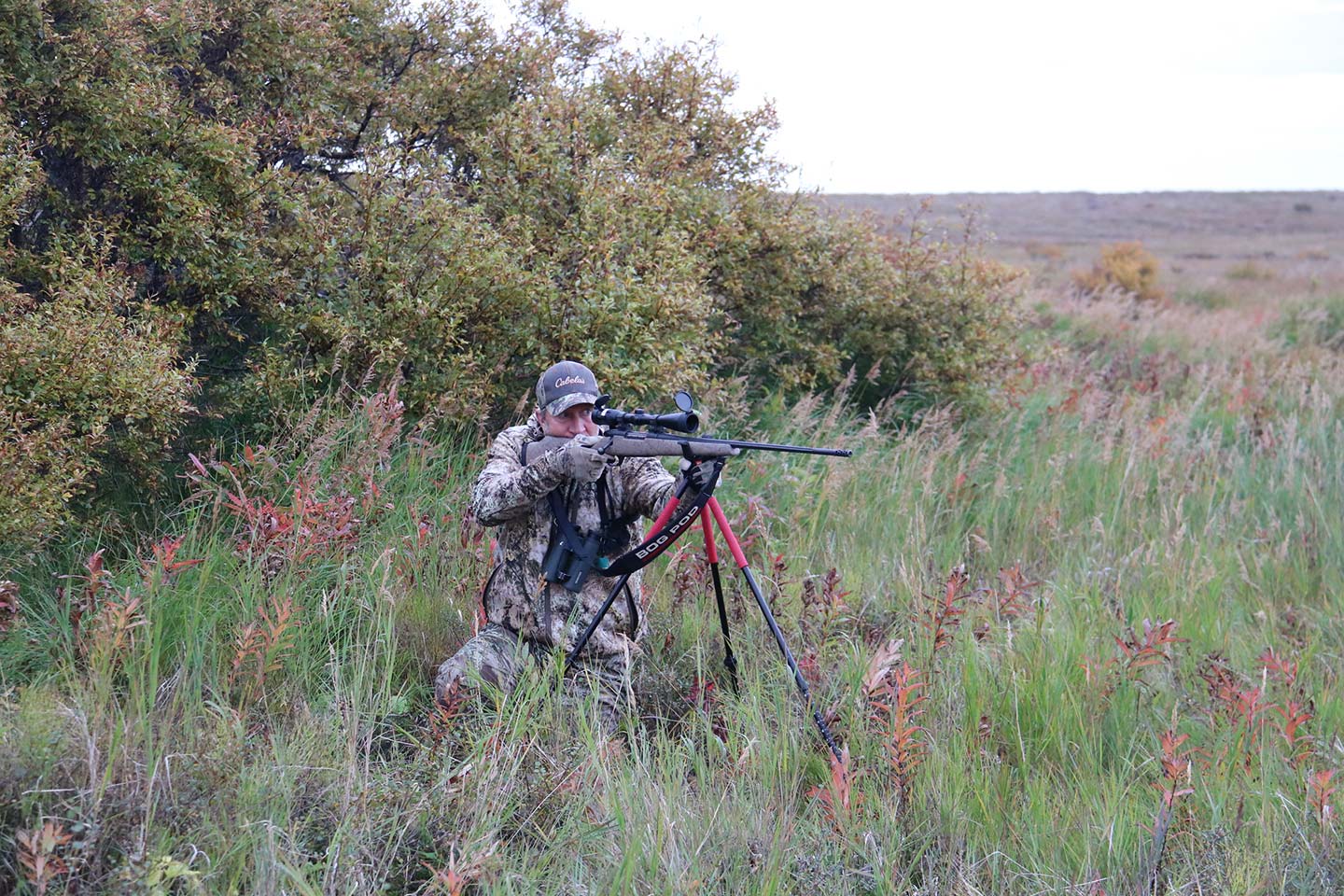
Scope, Tripod
A spotting scope and a good tripod are two of my most important pieces of moose hunting gear. Take a stout, lightweight tripod that will be steady on the loose tundra and will hold up in high winds. I like a thick, carbon-fiber tripod because it’s sturdy and light. A quality spotting scope is necessary to size up bulls to make sure they’re legal. These items can also be used to study the terrain to plan a stalk, and even as shooting sticks.
Once a bull is spotted, the hardest part can be figuring out a way to reach it. Before taking off on foot, locate landmarks and keep an eye on them as you go. The flat tundra can be surprisingly challenging to navigate, especially if you’re moving through alder patches as you go. You’ll likely get rerouted multiple times due to deep water, quicksand-like mud flats and even grizzly bears.
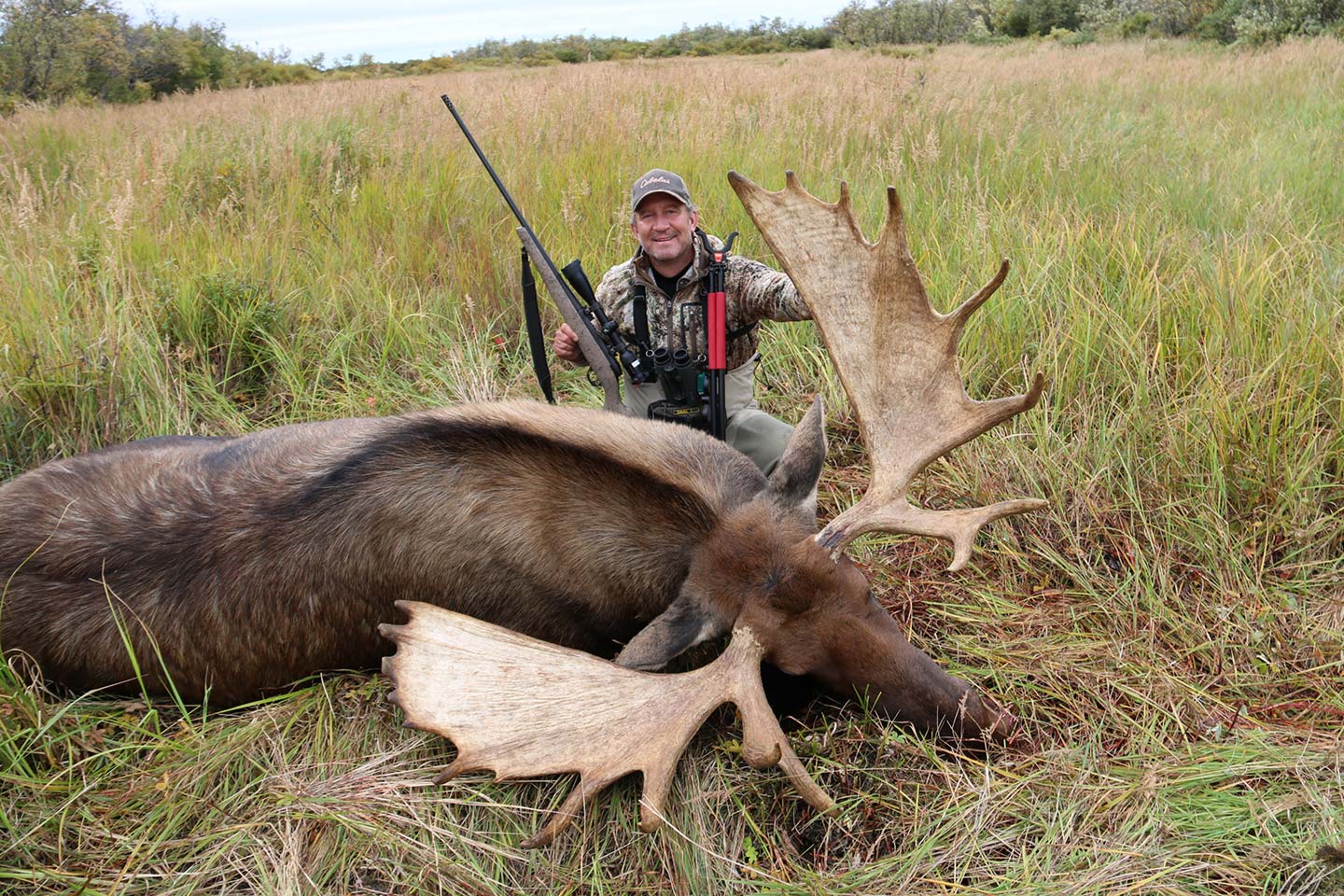
Think Weight, Meat
A big bull moose can stand over seven feet tall at the shoulders and weigh 1,500 pounds. You’ll get about 700 pounds of boned-out meat off a big bull. If you’re going to have your bull mounted, add at least another 150 pounds for the antlers and cape. They’re a massive animal and once down, they require a lot of work. The same knife you use on deer will work fine on moose and be sure to have a sharpener. If you are hunting near water, having a one-man inflatable raft is a great way to pack out moose meat.
In Alaska, every bit of meat must be salvaged from a bull, and there’s no hiding a moose kill. State troopers routinely fly all over Alaska searching for waste. Be sure to have plenty of game bags and leave no meat behind. Check the current hunting regulations for details on meat salvage laws.
Before finalizing your moose hunt, make sure you have a plan to get the meat out of the field and all the way home. A few seasons ago three buddies all filled their moose tags. They weren’t planning on killing three bulls. Six bushplane loads later, their meat was out of the field and it took two more loads to get the hunters and their gear. That cost them nearly $6,000 they had not planned on, and they still had to get their meat and antlers back to their homes in the Lower 48.
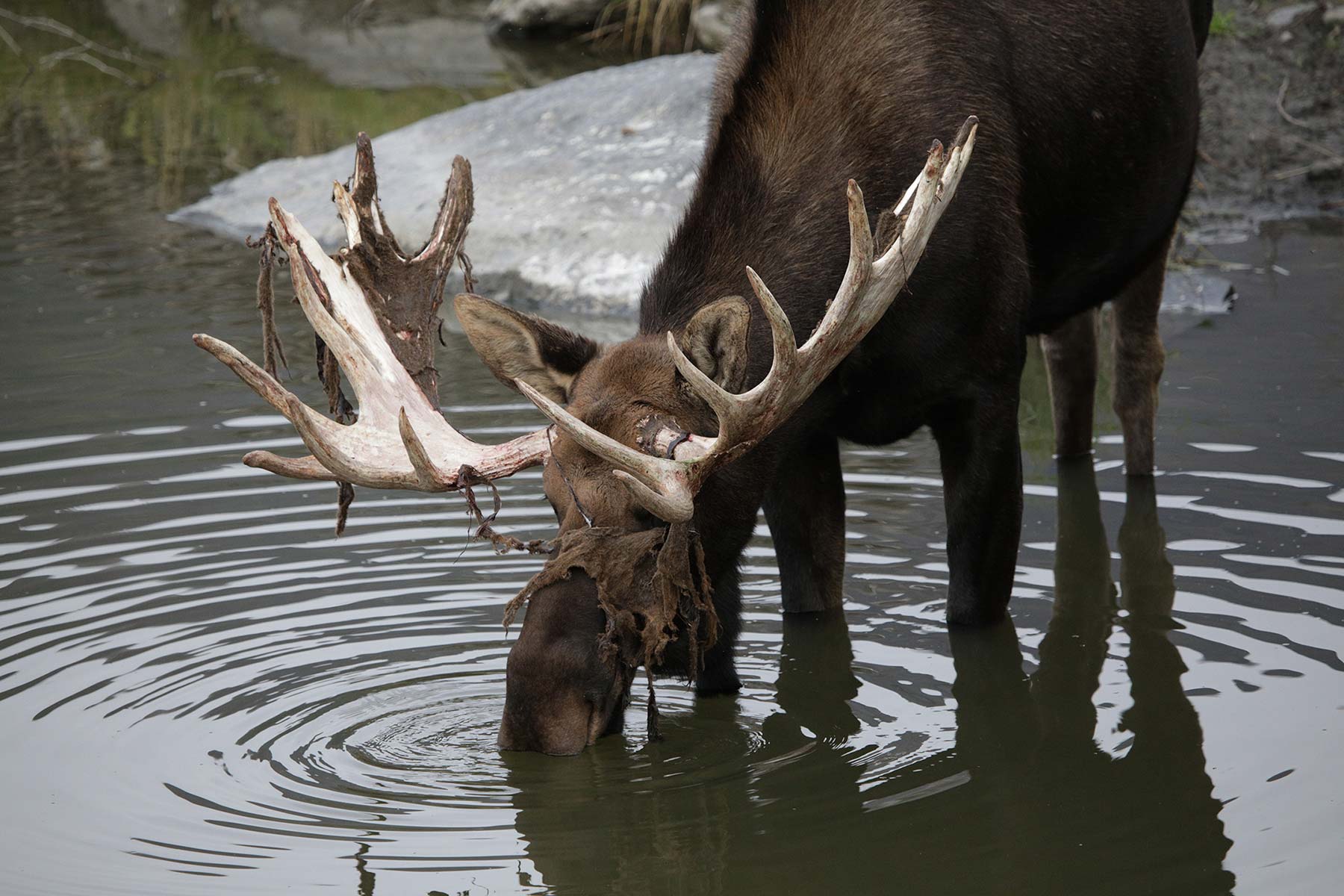
If you’ve ever dreamed of hunting moose in Alaska, now is the time because populations are booming and there are a lot of big bulls. Remember, Alaska is not a training ground. Here, you’re on your own and you must be self-sufficient.
The more prepared you are and the better shape you’re in, the greater the odds of having a safe, successful moose hunt. And when you do punch a tag and make it home, tired and sore, you’ll look back on it as one of the most rewarding, awesome experiences the world of big game hunting has to offer.
Publisher’s Note: For signed copies of Scott Haugen’s popular line of hunting books, visit scotthaugen.com. Follow Scott’s adventures on Instagram and Facebook.
Per our affiliate disclosure, we may earn revenue from the products available on this page. To learn more about how we test gear, click here.



